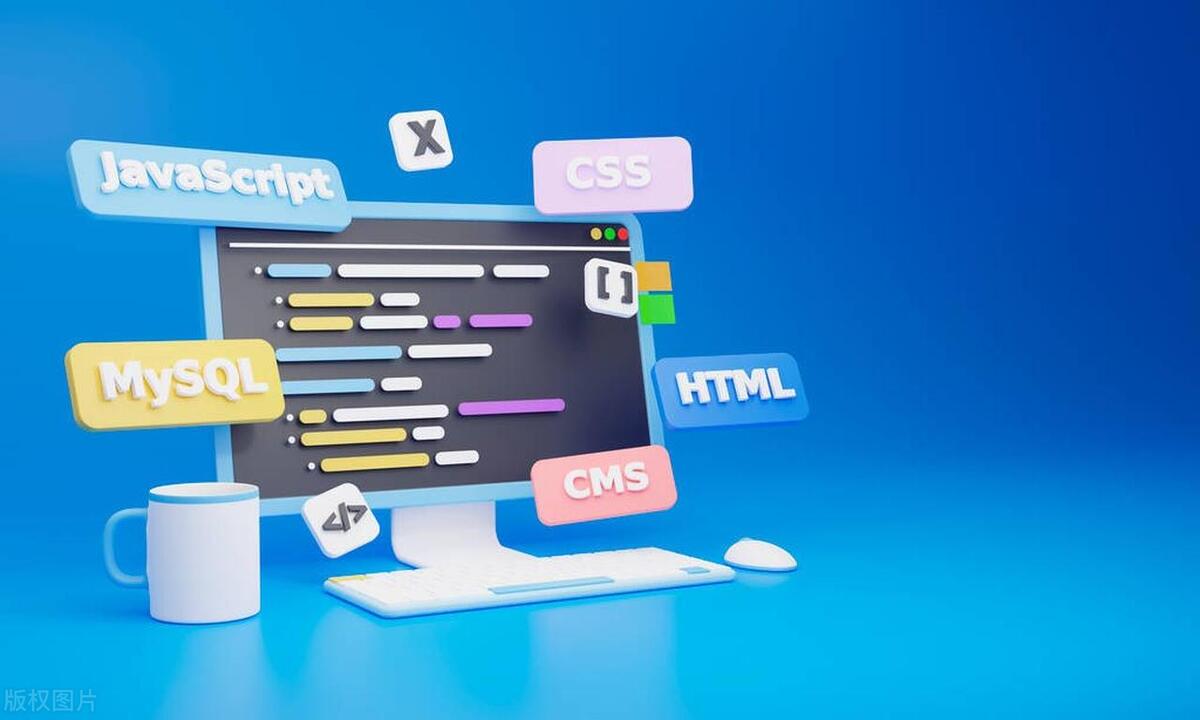The answer to building a design system is to unify and manage elements such as colors, fonts, spacings, etc. through structured methods. 1. Start with the basic variables, define "atomic" variables such as main color, font size, spacing units, etc., which facilitates global adjustment; 2. Organize variables by module, group colors, fonts, etc., improve maintainability and facilitate topic switching; 3. Use variables instead of hard coded in components to ensure consistency and reduce maintenance costs; 4. Annotate or accompanying document descriptions to improve team collaboration efficiency and newcomers' speed.

Using CSS variables to build a design system is actually just one word: unification . It is not just about writing a few variables, but it is about structuring the basic elements of color, font, and spacing to keep the entire project consistent at the visual and code levels.

1. Start with the basic variables, don't be too complicated at the beginning
Many people want to abstract everything into variables at the beginning, but the variable file becomes longer than the stylesheet. In fact, at the beginning, you only need to define a few key "atomic" variables, such as main color, font size, and spacing units.
:root {
--color-primary: #007bff;
--font-size-base: 16px;
--spacing-unit: 1rem;
}The advantage of this is that you can adjust the global style at any time without changing the value everywhere. For example, if you suddenly want to change the theme color, just change a place.

Suggested practices:
- Try to semanticize color naming, such as
--color-primaryinstead of--blue - Font size can be defined in proportion (such as base, lg, sm)
- The spacing units are uniformly used for multiples, such as
1rem,1.5rem, etc.
2. Organize variables into modules and don't throw them all into:root
As the project grows bigger, you will find that all variables are placed in :root will become more and more difficult to maintain. At this time, you should consider organizing variables according to modules, such as colors, fonts, borders, shadows, etc.

:root {
--color-primary: #007bff;
--color-success: #28a745;
}
/* Group by module*/
[data-theme="dark"] {
--color-primary: #0056b3;
--color-success: #1e7e34;
} This structure is clearer and also facilitates theme switching. You can disassemble different modules into separate CSS files, such as _colors.css , _typography.css , and then import them in the main file.
3. Use variables in components instead of writing dead values directly
This is the easiest point to ignore. Although many people define variables, they still write margin: 16px; this hard code is directly written when writing components. This not only loses the meaning of the variable, but also causes maintenance difficulties.
The correct way to do it is:
.button {
padding: var(--spacing-unit) calc(var(--spacing-unit) * 2);
font-size: var(--font-size-base);
color: var(--color-primary);
}In this way, no matter how the design is modified in the future, as long as the variable is updated, all used places will take effect automatically.
Common misunderstandings:
- Sometimes, for the sake of "fast", the dead value is directly written, and the cost of later changes is higher.
- Ignore some edge cases, such as the color of the button hover state is not controlled by variables
4. Comment on variables, don't just rely on naming and guessing the meaning
CSS does not have annotation function? If you are wrong, you can use /*! */ or write a document description. Especially when teamwork, unannotated variables are as troublesome as riddles.
/*!
Base spacing unit used throughout the system.
All margins and paddings should use multiples of this.
*/
:root {
--spacing-unit: 1rem;
}You can also write a supporting Markdown document to list the functions, example values, usage scenarios, etc. of each variable, which is particularly helpful for newcomers to get started.
Basically that's it. Using CSS variables as a design system seems simple, but if you really need to do it well, you need to work hard on variable structure, naming specifications, and usage habits. It may feel troublesome at first, but once it is set up, the development efficiency and maintenance experience will be greatly improved.
The above is the detailed content of Building Design Systems with CSS Variables. For more information, please follow other related articles on the PHP Chinese website!

Hot AI Tools

Undress AI Tool
Undress images for free

Undresser.AI Undress
AI-powered app for creating realistic nude photos

AI Clothes Remover
Online AI tool for removing clothes from photos.

Clothoff.io
AI clothes remover

Video Face Swap
Swap faces in any video effortlessly with our completely free AI face swap tool!

Hot Article

Hot Tools

Notepad++7.3.1
Easy-to-use and free code editor

SublimeText3 Chinese version
Chinese version, very easy to use

Zend Studio 13.0.1
Powerful PHP integrated development environment

Dreamweaver CS6
Visual web development tools

SublimeText3 Mac version
God-level code editing software (SublimeText3)
 How does React handle focus management and accessibility?
Jul 08, 2025 am 02:34 AM
How does React handle focus management and accessibility?
Jul 08, 2025 am 02:34 AM
React itself does not directly manage focus or accessibility, but provides tools to effectively deal with these issues. 1. Use Refs to programmatically manage focus, such as setting element focus through useRef; 2. Use ARIA attributes to improve accessibility, such as defining the structure and state of tab components; 3. Pay attention to keyboard navigation to ensure that the focus logic in components such as modal boxes is clear; 4. Try to use native HTML elements to reduce the workload and error risk of custom implementation; 5. React assists accessibility by controlling the DOM and adding ARIA attributes, but the correct use still depends on developers.
 Describe the difference between shallow and full rendering in React testing.
Jul 06, 2025 am 02:32 AM
Describe the difference between shallow and full rendering in React testing.
Jul 06, 2025 am 02:32 AM
Shallowrenderingtestsacomponentinisolation,withoutchildren,whilefullrenderingincludesallchildcomponents.Shallowrenderingisgoodfortestingacomponent’sownlogicandmarkup,offeringfasterexecutionandisolationfromchildbehavior,butlacksfulllifecycleandDOMinte
 What is the significance of the StrictMode component in React?
Jul 06, 2025 am 02:33 AM
What is the significance of the StrictMode component in React?
Jul 06, 2025 am 02:33 AM
StrictMode does not render any visual content in React, but it is very useful during development. Its main function is to help developers identify potential problems, especially those that may cause bugs or unexpected behavior in complex applications. Specifically, it flags unsafe lifecycle methods, recognizes side effects in render functions, and warns about the use of old string refAPI. In addition, it can expose these side effects by intentionally repeating calls to certain functions, thereby prompting developers to move related operations to appropriate locations, such as the useEffect hook. At the same time, it encourages the use of newer ref methods such as useRef or callback ref instead of string ref. To use Stri effectively
 Vue with TypeScript Integration Guide
Jul 05, 2025 am 02:29 AM
Vue with TypeScript Integration Guide
Jul 05, 2025 am 02:29 AM
Create TypeScript-enabled projects using VueCLI or Vite, which can be quickly initialized through interactive selection features or using templates. Use tags in components to implement type inference with defineComponent, and it is recommended to explicitly declare props and emits types, and use interface or type to define complex structures. It is recommended to explicitly label types when using ref and reactive in setup functions to improve code maintainability and collaboration efficiency.
 Server-Side Rendering with Next.js Explained
Jul 23, 2025 am 01:39 AM
Server-Side Rendering with Next.js Explained
Jul 23, 2025 am 01:39 AM
Server-siderendering(SSR)inNext.jsgeneratesHTMLontheserverforeachrequest,improvingperformanceandSEO.1.SSRisidealfordynamiccontentthatchangesfrequently,suchasuserdashboards.2.ItusesgetServerSidePropstofetchdataperrequestandpassittothecomponent.3.UseSS
 A Deep Dive into WebAssembly (WASM) for Front-End Developers
Jul 27, 2025 am 12:32 AM
A Deep Dive into WebAssembly (WASM) for Front-End Developers
Jul 27, 2025 am 12:32 AM
WebAssembly(WASM)isagame-changerforfront-enddevelopersseekinghigh-performancewebapplications.1.WASMisabinaryinstructionformatthatrunsatnear-nativespeed,enablinglanguageslikeRust,C ,andGotoexecuteinthebrowser.2.ItcomplementsJavaScriptratherthanreplac
 Vue CLI vs Vite: Choosing Your Build Tool
Jul 06, 2025 am 02:34 AM
Vue CLI vs Vite: Choosing Your Build Tool
Jul 06, 2025 am 02:34 AM
Vite or VueCLI depends on project requirements and development priorities. 1. Startup speed: Vite uses the browser's native ES module loading mechanism, which is extremely fast and cold-start, usually completed within 300ms, while VueCLI uses Webpack to rely on packaging and is slow to start; 2. Configuration complexity: Vite starts with zero configuration, has a rich plug-in ecosystem, which is suitable for modern front-end technology stacks, VueCLI provides comprehensive configuration options, suitable for enterprise-level customization but has high learning costs; 3. Applicable project types: Vite is suitable for small projects, rapid prototype development and projects using Vue3, VueCLI is more suitable for medium and large enterprise projects or projects that need to be compatible with Vue2; 4. Plug-in ecosystem: VueCLI is perfect but has slow updates,
 How to manage component state using immutable updates in React?
Jul 10, 2025 pm 12:57 PM
How to manage component state using immutable updates in React?
Jul 10, 2025 pm 12:57 PM
Immutable updates are crucial in React because it ensures that state changes can be detected correctly, triggering component re-rendering and avoiding side effects. Directly modifying state, such as push or assignment, will cause React to be unable to detect changes. The correct way to do this is to create new objects instead of old objects, such as updating an array or object using the expand operator. For nested structures, you need to copy layer by layer and modify only the target part, such as using multiple expansion operators to deal with deep attributes. Common operations include updating array elements with maps, deleting elements with filters, adding elements with slices or expansion. Tool libraries such as Immer can simplify the process, allowing "seemingly" to modify the original state but generate new copies, but increase project complexity. Key tips include each






